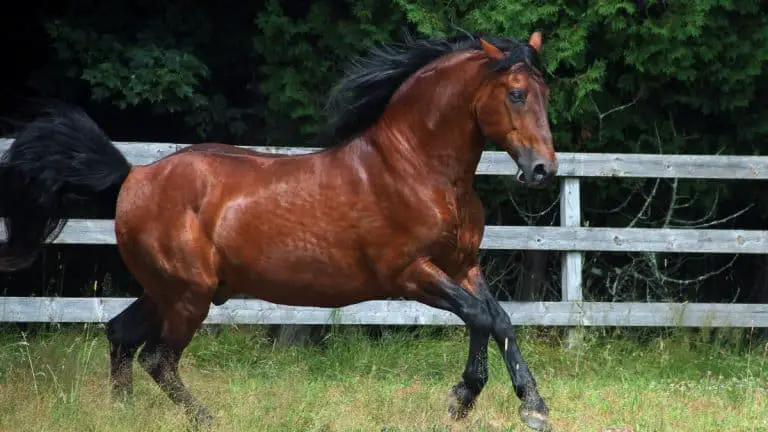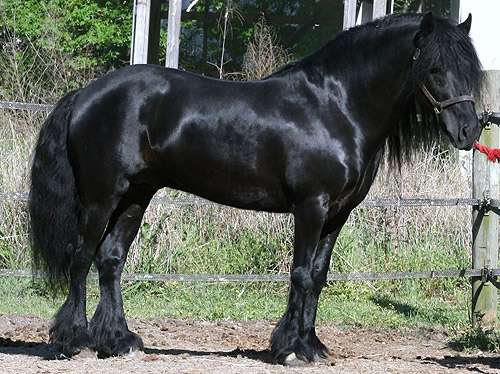
Size
1.6 to 1.7 meters.
Color
In most cases, gray or black.
Physical Attributes
The majority of percheron horses are constructed with broad, muscular heads and prominent ears. The height of these horses ranges from 15 to 19 hands. Percherons have a variety of coat hues. Usually long, wavy, and flowy, their tails and manes.
Characteristics and Genetics
The Huisne river valley in western France, which was a portion of the former Perche region, is the birthplace of the Percheron draught horse breed, which bears its name. The breed’s progenitors were in the valley by the 17th century, though it is unknown where they came from exactly. They were initially developed to be military horses. They started out pulling stagecoaches, and subsequently they were employed for farming and lugging big loads. The breed was infused with Arabian blood in the late 18th and early 19th century. The first exclusively Percheron stud book was established in France in 1883, and Percheron exports from France to the United States and other nations increased dramatically in the late 19th century.
The breed saw widespread use in Europe during the conflict, and some horses were even brought from the US back to France to aid in the fighting. The British Percheron Horse Society was established in 1918, the same year that Percherons started being bred in Great Britain. The present US Percheron register was established in 1934 following a sequence of name and studbook ownership transfers. In the United States, Percherons made up 70% of the population of draught horses in the 1930s, but after World War II, their numbers sharply decreased. However, the population started to rebound, and as of 2009, only in the United States, about 2,500 horses were registered annually.
The breed is still frequently employed in France for food and for draught labour. They have been mixed with a number of light horse breeds to create racehorses and horses for the range. In addition to working under saddle and pulling carriages, purebred Percherons also compete in English riding sports like show jumping.
Reproduction
The reproductive rates of this breed are the same as those of all other horse breeds. Usually, the breeders choose a preferred stallion to mate with the mare. The mares go through a gestation phase of roughly 11 months after mating, however this varies significantly. Mares typically give birth to a single foal, or progeny, in the majority of births. Between the ages of four and six months is when weaning usually starts.
Care as a Pet
Similar to horses of other breeds, these animals thrive in herds and have a gregarious character. They require expansive pastures with an abundance of grass to eat, and owner should also add grain and hay to their diet to round out their nutrition. Owner must also make sure that everyone has constant access to clean water and some kind of shelter.
Their maintenance is a little different from that of a typical horse because of their big size. To give them the care they need, their needs for food and housing must reflect this.

Nutrition and Diet
A Percheron often consumes more food than a horse of the same size. It may easily consume 5 pounds of grain and 30 pounds of high-quality hay in a single day. Supplements for vitamins and minerals may be required, particularly if the horse is unable to forage on grass.
Grooming
For Percherons, a good grooming routine is crucial. Their coats can become extremely thick and heavy, particularly when they are in a cold region. As a result, regular grooming is essential to get rid of dirt, junk, tangles, and loose hair. Additionally, it is known that germs are drawn to the hair on a horse’s legs, which can lead to skin infections and inflammation. It’s crucial to maintain that area’s cleanliness, neatness, and dryness.
Behavior
This adaptable breed has a serene personality and a kind nature. Additionally, it adapts easily to a saddle for riding. The breed is typically referred to as a “gentle giant.”
Table





